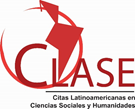Empleo de teléfonos inteligentes como estrategia de aprendizaje en estudiantes de pregrado en tiempos de crisis sanitaria por Covid-19
Resumen
RESUMEN
El objetivo general fue determinar la relación entre el empleo de teléfonos inteligentes y las estrategias de aprendizaje en estudiantes de pregrado en tiempos de crisis sanitaria por covid-19. Los objetivos específicos fueron: determinar la relación entre la flexibilidad y movilidad de los teléfonos inteligentes y las estrategias de aprendizaje; determinar la relación entre la portabilidad de los teléfonos inteligentes y las estrategias de aprendizaje; determinar la relación entre la inmediatez y conectividad de los teléfonos inteligentes y las estrategias de aprendizaje; determinar la relación entre la versatilidad de los teléfonos inteligentes y las estrategias de aprendizaje; determinar la relación entre la ubicuidad de los teléfonos inteligentes y las estrategias de aprendizaje. El estudio tuvo enfoque cuantitativo, diseño no experimental, nivel correlacional y transversal. La población fueron 2.146 estudiantes de ingeniería industrial de una universidad privada de Lima, Perú. Se tomó una muestra de 337 estudiantes. Se aplicó de forma virtual un cuestionario con 35 preguntas relacionadas con las variables y dimensiones, validado mediante el juicio de tres expertos, asimismo se calculó su confiabilidad, resultando ?=0.82 para empleo de teléfonos inteligentes y ?=0.86 para estrategias de aprendizaje. Se realizó el análisis descriptivo e inferencial de los datos, confirmándose la existencia de una relación significativa entre ambas variables.
Palabras clave:
Teléfonos inteligentes, estrategias, aprendizaje, flexibilidad, inmediatez, ubicuidad
ABSTRACT
The general objective was to determine the relationship between the use of smartphones and learning strategies in undergraduate students in times of health crisis due to covid-19. The specific objectives were: to determine the relationship between the flexibility and mobility of smartphones and learning strategies; determine the relationship between smartphone portability and learning strategies; determine the relationship between the immediacy and connectivity of smartphones and learning strategies; determine the relationship between the versatility of smartphones and learning strategies; determine the relationship between the ubiquity of smartphones and learning strategies. The study had a quantitative approach, non-experimental design, correlational and cross-sectional level. The population was 2,146 industrial engineering students from a private university in Lima, Peru. A sample of 337 students was taken. A questionnaire with 35 questions related to the variables and dimensions was applied virtually, validated by the judgment of three experts, and its reliability was also calculated, resulting in ?=0.82 for the use of smartphones and ?=0.86 for learning strategies. The descriptive and inferential analysis of the data was carried out, confirming the existence of a significant relationship between both variables.Keywords:
Smartphones, strategies, learning, flexibility, immediacy, ubiquityDescargas
Descargas
Publicado
Cómo citar
Número
Sección
Licencia
La editorial "Universo Sur", de la Universidad de Cienfuegos, publica el contenido de la Revista "Conrado" bajo una Licencia Creative Commons Atribución-NoComercial-SinDerivar 4.0 Internacional.
© Podrá reproducirse y socializarse, de forma parcial o total, el contenido de esta publicación, sin fines comerciales, siempre que se haga de forma literal y se mencione la fuente.







